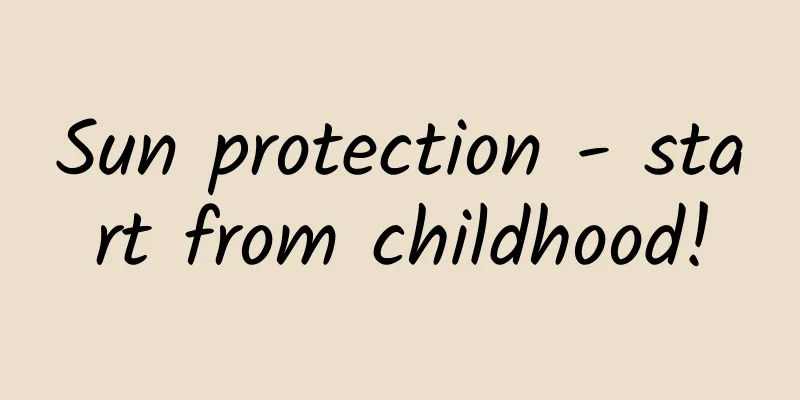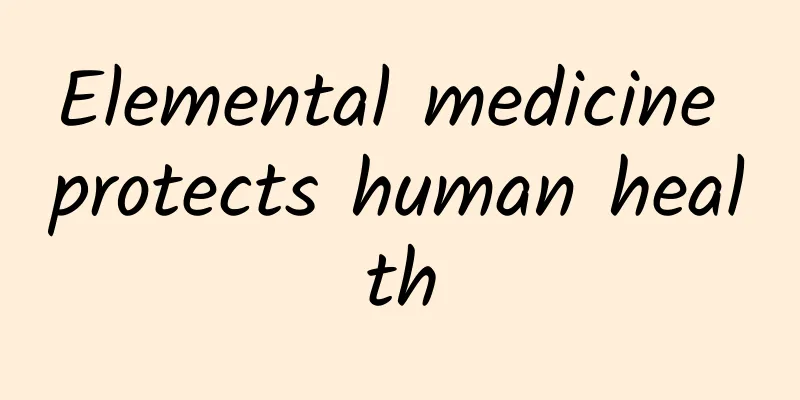Sun protection - start from childhood!

|
Author: Li Lu Dalian Women and Children's Medical Center (Group) Reviewer: Wei Fenglei, Chief Physician, Dalian Women and Children's Medical Center (Group) The baby's skin is in the stage of growth and development and cannot withstand too much ultraviolet radiation. Ultraviolet exposure is a risk factor for a variety of skin diseases (such as skin malignant melanoma, skin basal cell carcinoma, solar keratosis, skin squamous cell carcinoma, etc.). If there is a lack of sun protection during this period, various skin problems and aging problems in adulthood may appear earlier. Therefore, sun protection should start from childhood! While we enjoy the sunbathing in the sunshine, let's first learn about photodamage and sun protection. This will not only allow us to accept the warm gift of nature with peace of mind, but also protect our healthy and beautiful skin. Ultraviolet rays are divided into long-wave ultraviolet rays, medium-wave ultraviolet rays and short-wave ultraviolet rays according to their wavelengths. Ultraviolet rays of different wavelengths can have different effects on the skin. Long-wave ultraviolet rays (UVA): mainly act on the dermis, causing photoaging, tanning, spots and pigmentation. Medium-wave ultraviolet rays (UVB): mainly act on the epidermis, causing skin damage (such as red skin and burning sensation). Short-wave ultraviolet rays (UVC): absorbed by the ozone layer, and have little effect on human skin. Therefore, the fundamental purpose of our sun protection is to prevent UVA and UVB from damaging the skin, which is the key point we need to pay attention to when choosing a sun protection method. Although sometimes we do sun protection, we may still get sunburned. So, what kind of skin manifestations will appear after sunburn? 1. Skin redness, swelling, burning, itching, stinging, etc., and blisters may appear in severe cases. 2. Generally, the skin erythema reaction reaches its peak on the second day after sun exposure. The erythema subsides in about a week, and desquamation and pigmentation appear. 3. In severe cases, systemic reactions may occur, such as fever, headache, fatigue, nausea and general discomfort, and even palpitations, delirium and shock. Special reminder: If the above symptoms occur, or if your baby has chills, fever, general discomfort, etc., please seek medical attention immediately and seek help from a professional dermatologist. Figure 1 Copyright image, no permission to reprint Figure 2 Copyright image, no permission to reprint How should we avoid sunburn? 1. Avoid going out during the time when ultraviolet rays are the strongest: Generally, sunlight is strong from 10 am to 2 pm. The ultraviolet rays are the strongest in late spring and summer. Try to avoid going out during this time period, especially for infants and young children (babies have thinner and more delicate skin and are more sensitive to ultraviolet rays). Be careful to avoid places with a high ultraviolet index (UVI) (such as high altitudes, beaches, snow, walls of high-rise buildings in cities, car windows, etc.). 2. Hard sun protection (strict physical covering and shielding) that cannot be ignored: wear long-sleeved clothes, wide-brimmed hats, umbrellas, sun-proof glasses, and veils. Infants under 6 months old have thin skin and strong transdermal absorption capacity, so they should focus on "hard sun protection" and avoid using sunscreen to prevent possible skin irritation, allergies, photosensitivity, and even phototoxic reactions; babies over 6 months old should also avoid using or use less as much as possible. If they need to use it, they should use physical sunscreens as much as possible and avoid using chemical sunscreens. 3. Paying attention to sun protection does not mean avoiding exposure to the sun at all, but avoiding strong sunlight, prolonged exposure and damage to the skin caused by sunlight. In fact, even if all sun protection measures are taken, you will still be exposed to the sun, and the sun is penetrating, and the ground also reflects the sun. Especially in the summer when the sun is particularly strong, the reflection of the sun from the ground can also cause great harm to the baby, so it is very important to use sunscreen products reasonably and effectively on exposed parts. So, how do we choose the sunscreen products that are suitable for us? First of all, we need to understand the sunscreen principle of sunscreen products. According to the different modes of action of the active ingredients in sunscreen products, they are divided into physical sunscreen and chemical sunscreen. Physical sunscreen mainly relies on reflection to shield ultraviolet rays to achieve the purpose of sunscreen. It will not be absorbed by the skin. Because it is inert and stable, it will not photodegrade like chemical sunscreen and is not easy to cause skin sensitivity. However, it is relatively thick and whitish, and the protective effect is limited. It is suitable for dry skin and sensitive skin. Chemical sunscreen absorbs ultraviolet rays and then releases them in a lower energy form to avoid direct damage from ultraviolet rays. A variety of UVA and UVB absorbers are added to chemical sunscreens. Since sunscreens are gradually oxidized while absorbing ultraviolet rays, the sunscreen effect will weaken when absorbed to a certain extent. Therefore, it is necessary to reapply in time according to the intensity and time of ultraviolet rays. Chemical sunscreen ingredients are easy to absorb, light and thin, and transparent, but they are easy to cause allergies and are suitable for mixed skin and oily skin. At present, there are also some products on the market that have both physical and chemical sunscreen effects. Mothers can choose according to their own needs when purchasing. If the baby is prone to allergies, do not choose chemical sunscreen products. Otherwise, you can choose any one. It is generally not recommended for babies under 3 years old to use chemical sunscreen. The selection of sunscreen products depends on two major indicators: SPF (an indicator reflecting the anti-redness effect) = the time to reach the minimum erythema dose (MED) on the area where the sunscreen cosmetics are applied / the time to reach the minimum erythema dose (MED) on the area where the sunscreen cosmetics are not applied. PA (an indicator reflecting the anti-darkening effect) = the minimum sustained darkening dose (MPPD) required for the skin protected by the sunscreen cosmetics to darken / the minimum sustained darkening dose (MPPD) required for the skin not protected by the sunscreen cosmetics to darken. In general, choose products with SPF 20 and PA (++); in the hot summer and strong sunlight, choose products with SPF 30 or above and PA (+++); when swimming or sunbathing under the scorching sun, choose products with SPF 60 or above and PA (++++). So, we have selected sunscreen products according to our own conditions and the intensity of sunlight exposure. How can we use them to achieve twice the result with half the effort? Chemical sunscreen should be applied 20 to 30 minutes before going out; the dosage used needs to reach 2mg/cm2 (a thick layer, equivalent to the thickness of 3 A4 papers); according to personal conditions, it is generally difficult to reach the above standard with the dosage, and the frequency of use can be appropriately increased; it is recommended to reapply sunscreen every 2 hours outdoors; if the skin is sweating or wet or after cleaning, it should be reapplied; sun protection is also important on rainy days; car owners should also pay attention to sun protection; children are recommended to choose regular products with special signs. The "three musts" and "two don'ts" before and after using sunscreen products: use when the skin barrier is intact; do basic maintenance first; use makeup remover first, then clean with cleanser - for oily sunscreen products. No need to use makeup remover, you can directly use cleanser - for non-oily sunscreen products; no need to over-clean (such as frequent use of exfoliating products). Baby sunscreen does not need makeup removal, just use water or baby-specific shower gel and cleanser to clean it. Because baby sunscreens are easy to clean formula, and makeup remover products are too irritating to baby's skin. In addition, do not use adult cleaning products for babies. Babies have a layer of sebum on the surface of their skin to protect them, and using adult products will damage this layer of sebum. To "remove makeup" for babies, you can first wipe it with a baby wet wipe, or use baby-specific massage oil to remove makeup, and then rinse it thoroughly with a milder shower gel and water. Although there are many benefits for babies to sunbathe, ultraviolet rays will always quietly damage our skin when we go out. Children's skin is inherently fragile and sensitive, so when we take our baby to enjoy the sun, we must not forget scientific skin care and reasonable sun protection to protect the baby's healthy skin. |
<<: ben-evans: WhatsApp's daily message volume exceeds global SMS volume
>>: Game Insight: 5 tips for mobile game operations
Recommend
Bleeding after taking mifepristone
Because the anti-pregnancy mechanism of taking mi...
Can I perm my hair when I have my period?
Perming hair is one of the methods adopted by mod...
Is it the husband's fault that women are cold?
I believe that sexual indifference is not innate....
What to do if there are small bumps on the vulva
Female hygiene is particularly important, especia...
Women will be healthier in winter if they pay attention to these details!
Modern people pay attention to health and wellnes...
Fetal picture at 29 weeks of pregnancy
Many female friends feel a special place in this ...
What to do if diarrhea causes uterine contractions
The occurrence of uterine contractions is not onl...
Why does the skin around the eyes age faster than the skin on the face?
Some people say that to see whether a woman is ol...
Who is suitable for drinking white tea? Can I still drink the expired unopened white tea?
White tea is the closest to the natural state amo...
What is the difference between the Mercedes-Benz A-Class and C-Class? Introduction to Mercedes-Benz automatic transmission gears
Mercedes-Benz C-Class is the most popular model i...
Will the follicles grow after the night injection?
Oocytes are a prerequisite for the development of...
What are the treatments for uterine cysts?
Gynecological diseases are a problem that every w...
Women have knee pain when sleeping at night
Some patients may experience varying degrees of f...
28 weeks pregnant, lower abdomen pain
During pregnancy, any symptoms need more attentio...
It is a disease, but we have seriously ignored it...
There is a disease, You may not know it is a dise...







![[Medical Q&A] How to provide first aid when an elderly person chokes?](/upload/images/67f0e86364d63.webp)

